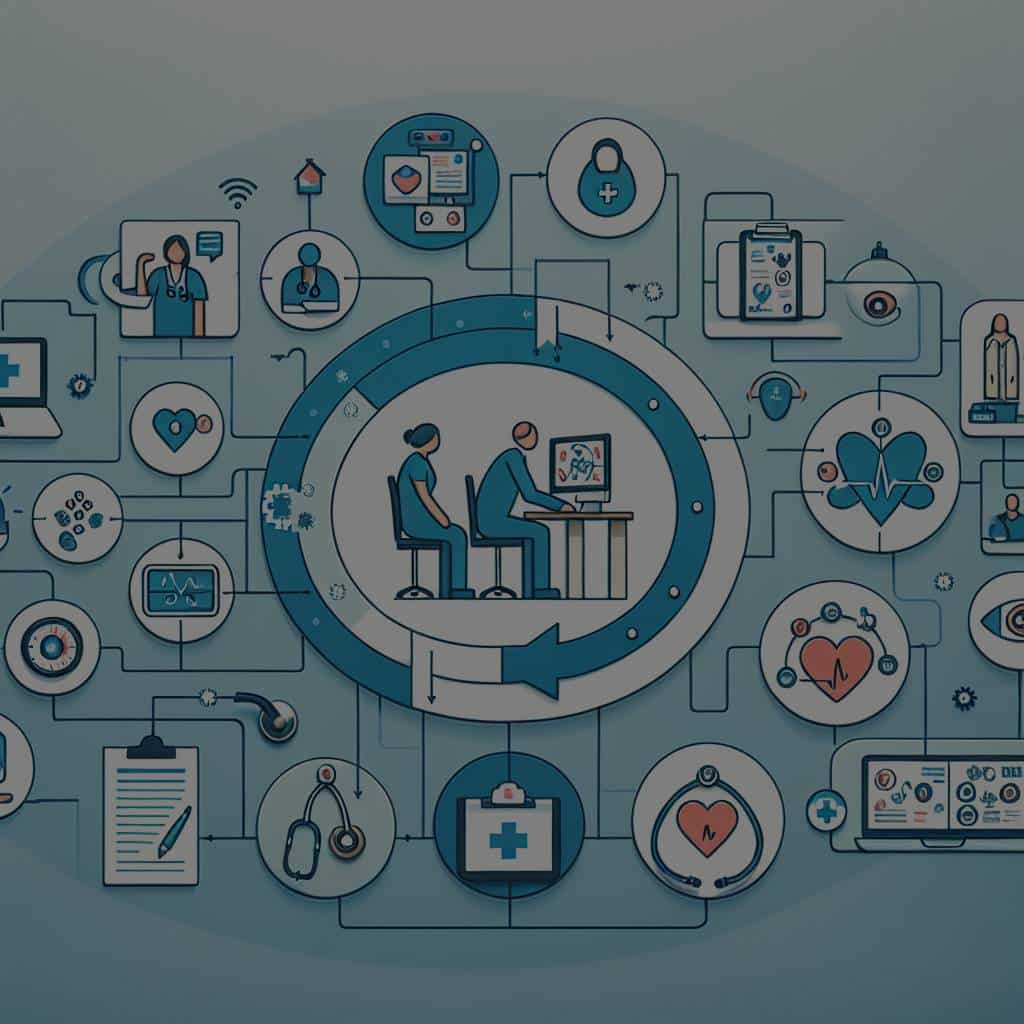Telemedicine is redefining the healthcare landscape globally. In the United Kingdom, the digital transformation of healthcare services has been expedited in the wake of the Covid-19 pandemic. The adoption of telemedicine is not merely a passing trend but an integral part of the ongoing evolution of healthcare. In this article, we’ll explore how telemedicine can significantly improve patient care by increasing access, reducing costs, and enhancing the quality of healthcare services.
Making Healthcare Accessible through Telemedicine
Traditionally, access to healthcare has been limited for people living in remote areas, the elderly, and those with physical disabilities. However, the advent of telemedicine has enabled healthcare providers to extend their reach to these underserved communities.
Topic to read : What Are the Key Factors for Success in UK’s Craft Beer Market?
Telemedicine uses digital technology to deliver medical services and information remotely. It incorporates various modes of communication, including video conferencing, online portals, and mobile apps. These provide a convenient platform for people to consult with healthcare professionals without the need for physical travel.
Through telemedicine, healthcare providers can offer a range of services, such as online consultations, electronic prescriptions, remote monitoring of patients, and digital diagnostics. By eliminating geographical boundaries, these services can provide quicker access to healthcare, especially during emergencies.
Additional reading : How to Develop a Competitive Edge for UK Businesses in the Global Marketplace?
Furthermore, the remote delivery of care services can help to decongest healthcare facilities and free up resources for more critical cases. Telemedicine can also empower patients by allowing them to take a more proactive role in managing their health, as they can access their health data and consult with healthcare providers at their convenience.
The Role of Telemedicine in Enhancing the Quality of Care
Telemedicine is not just about convenience and accessibility. It has a significant role in enhancing the quality of patient care. It allows healthcare providers to monitor patients in real time, enabling them to detect and treat health issues promptly.
Advanced telehealth systems can collect and analyse data from remote monitoring devices, such as digital stethoscopes, blood pressure monitors, and glucose meters. This data can provide valuable insights into the patient’s health status and help healthcare providers to make informed decisions about their care.
Telemedicine also facilitates better communication between patients and healthcare providers. By using online platforms, patients can schedule appointments, ask questions, and share their health concerns without the need for a face-to-face consultation. This can improve the patient-provider relationship and enhance the overall care experience.
Telemedicine and Cost-Effective Care
Apart from improving access and quality, telemedicine can also make healthcare more cost-effective for both patients and healthcare providers. Telehealth services can reduce the need for hospital admissions and readmissions by enabling timely treatment and prevention of complications.
For patients, the cost savings can be substantial. They can avoid travel expenses, reduce time off work, and eliminate the need for childcare during appointments. Furthermore, by facilitating early diagnosis and intervention, telemedicine can help to prevent the progression of diseases, thereby reducing the long-term cost of care.
Healthcare providers can also leverage telemedicine to streamline their operations and reduce overheads. Digital systems can automate administrative tasks, such as appointment scheduling, billing, and record-keeping, freeing up staff to focus on patient care.
The Impact of Covid-19 on the Adoption of Telemedicine
The Covid-19 pandemic has been a catalyst for the widespread adoption of telemedicine in the UK. As the virus spread rapidly, healthcare providers had to quickly adapt and find ways to deliver care remotely to protect patients and healthcare workers.
Telemedicine proved to be an effective solution. It allowed healthcare providers to continue offering essential services, such as mental health support and chronic disease management, while minimizing the risk of virus transmission.
The pandemic has also highlighted the need for digital solutions to manage public health crises. Telemedicine can help to track the spread of diseases, monitor patients in quarantine, and deliver health information and resources to the public.
Conclusion
Despite the challenges posed by the pandemic, the adoption of telemedicine in the UK has demonstrated its potential to transform healthcare delivery. By leveraging digital technology, healthcare providers can enhance accessibility, improve quality, and reduce the cost of care. As we move towards a post-Covid world, telemedicine will continue to play a vital role in shaping the future of healthcare in the UK.
The Integration of Telemedicine with Artificial Intelligence
Artificial intelligence (AI) continues to revolutionise various sectors, including healthcare. The combination of telemedicine and AI can significantly enhance the capabilities of remote care, making it more efficient and effective.
AI can be used to automate different aspects of telemedicine services. For instance, AI-powered chatbots can answer patients’ inquiries around the clock, thereby reducing the load on healthcare providers. Furthermore, AI can assist with patient monitoring by analysing data from healthcare devices and alerting healthcare professionals to any abnormalities.
Artificial intelligence can also facilitate the interpretation of medical imaging, enabling faster and more accurate diagnoses. Machine learning algorithms can be trained to detect abnormalities in various types of imaging, such as X-rays, CT scans, and MRIs. According to a systematic review on this subject published on Google Scholar, AI’s accuracy is comparable to that of experienced radiologists in identifying certain conditions.
Predictive analytics is another area where AI can add value. It can analyse large amounts of patient data to predict health risks and outcomes, supporting healthcare providers in making informed decisions regarding patient care. This can help to prevent complications, improve patient safety, and enhance overall patient satisfaction.
Addressing Challenges and Ensuring Patient-Centered Care in Telemedicine
While telemedicine offers numerous benefits, it’s essential to address potential challenges to ensure that patient-centered care is maintained. Issues such as data security, patient privacy, and access to technology need to be considered.
Ensuring data security is crucial as healthcare providers handle large amounts of sensitive patient data. Strengthening cybersecurity measures and adhering to data protection regulations can help mitigate this risk.
Patient privacy is another concern. Healthcare providers must ensure that their telemedicine platforms comply with privacy regulations and that patients understand their rights regarding their personal health information.
Access to technology can be a barrier for some patients, particularly the elderly or those living in low-income areas. It’s essential to provide adequate support to these patients to help them benefit from telemedicine services. This might involve patient education programs or providing devices and internet access to those who need them.
Despite these challenges, the benefits of telemedicine are clear. A study published on PMC Free and also highlighted on Article PubMed, showed that patients reported high levels of satisfaction with telemedicine services, citing convenience and the quality of care as top benefits.
Conclusion
The COVID pandemic has redefined healthcare practices, ushering in a new era where telemedicine services play a pivotal role. Despite the initial challenges, numerous studies and systematic reviews, including those available on Google Scholar, indicate that telemedicine improves patient care in many ways. It expands access to health care services, enhances the quality of patient monitoring, and can contribute to patient safety. Furthermore, the integration of artificial intelligence with telehealth services can further improve care delivery, paving the way for a more efficient and patient-centered healthcare system in the UK and other OECD countries.
While challenges such as data security, privacy, and access to technology need to be addressed, the benefits of telemedicine are clear. As we navigate the post-Covid world, healthcare providers must continue to leverage telemedicine to provide accessible, high-quality, and cost-effective care focused on patient satisfaction. This way, we can ensure that every individual, regardless of their location or physical condition, receives the care they need – a testament to the transformative power of telemedicine.






